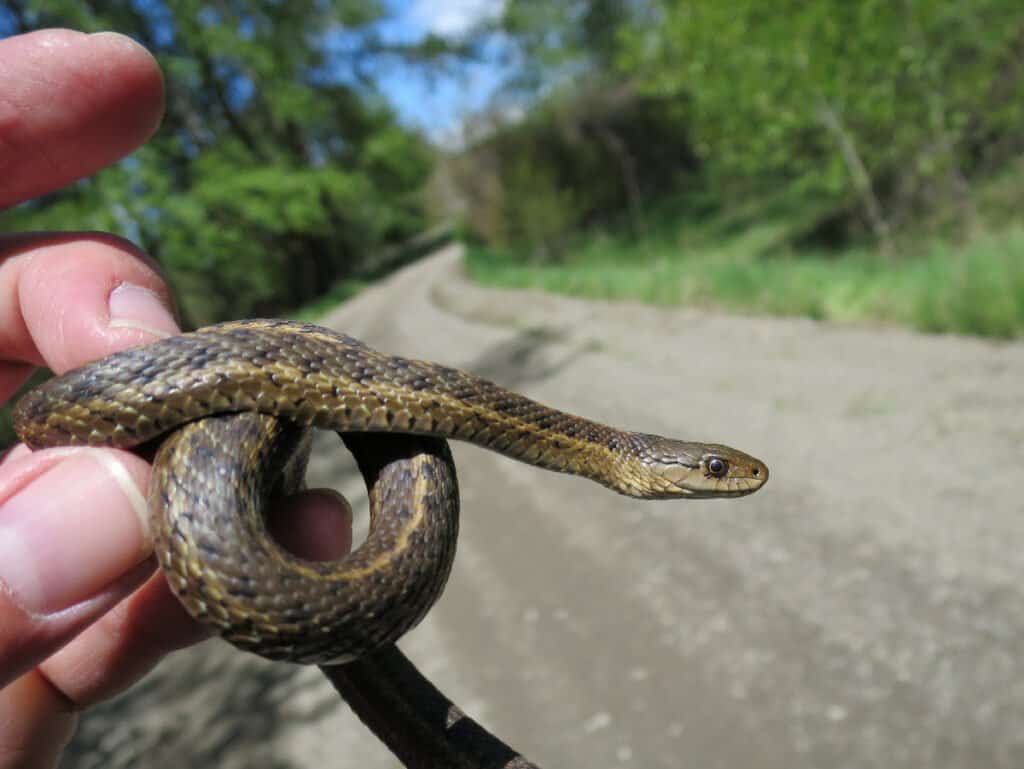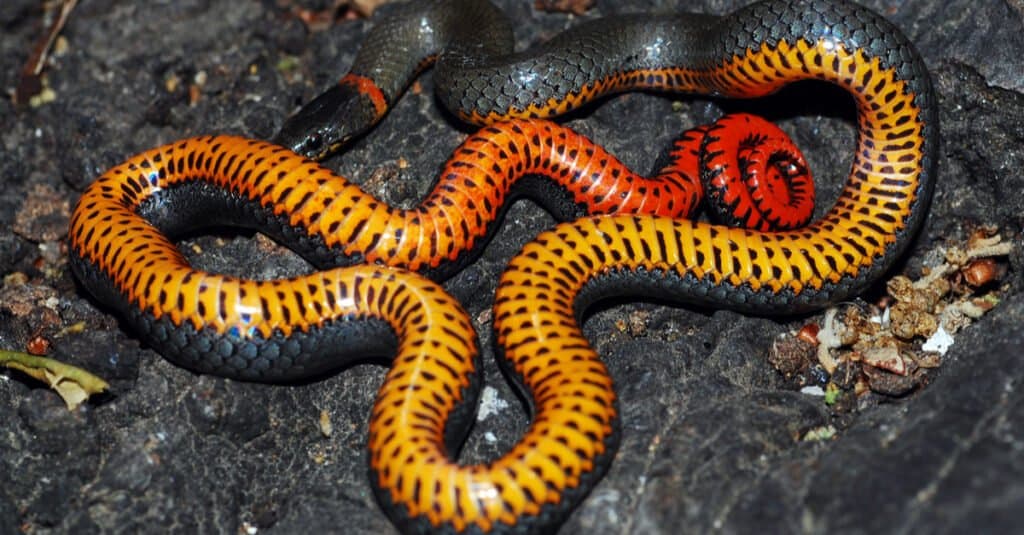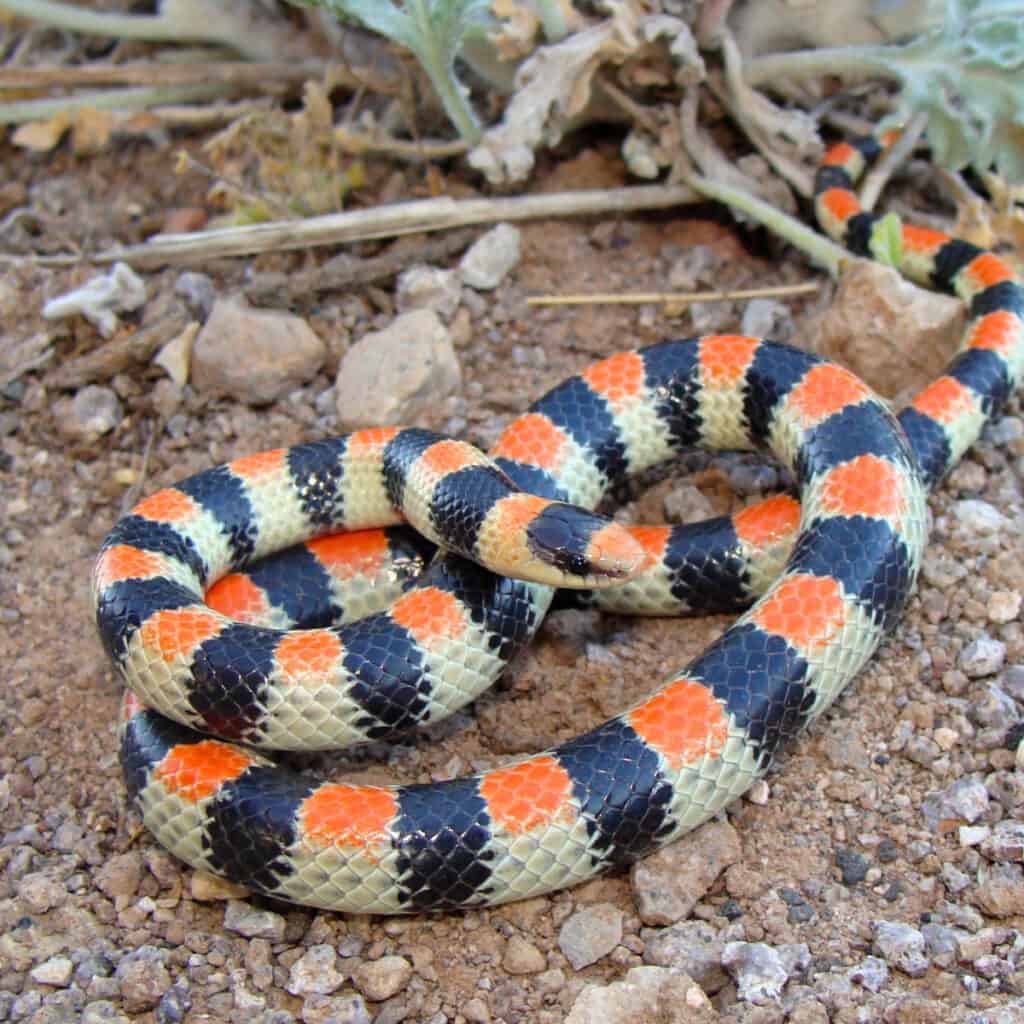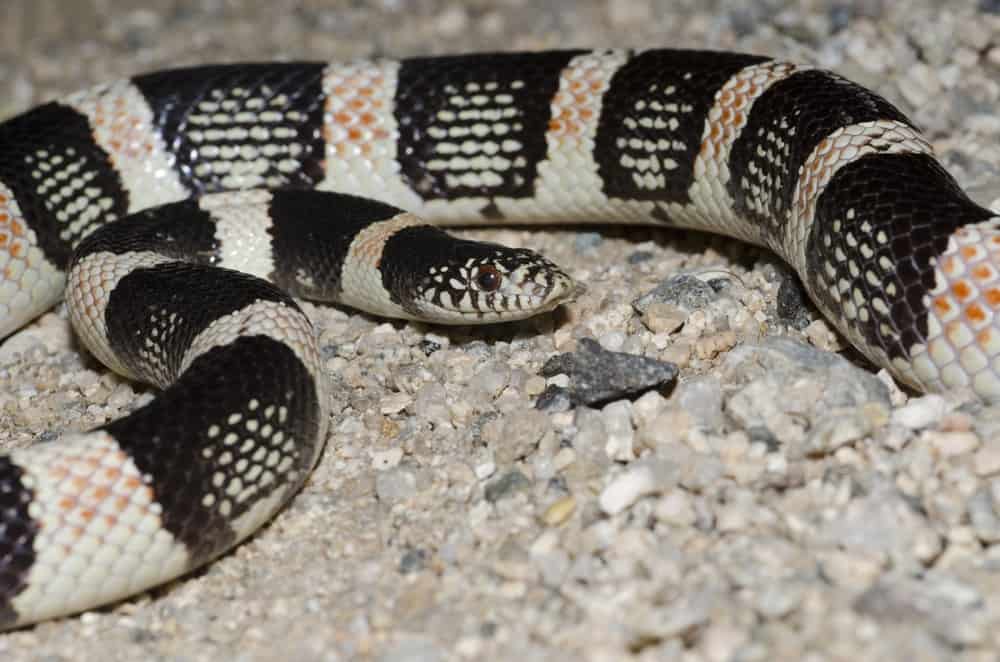The Snake River is 1,078 miles long and flows through Wyoming, Idaho, and Washington before emptying into the Pacific Ocean. Its headwaters begin in Yellowstone National Park, where a volcanic hotspot lies underneath. Volcanic activity and flooding during the last ice age created this winding river. Its waters have a rich history of having provided vital resources to the Shoshone Native Americans and the Lewis and Clark expedition. The Snake River also has diverse wildlife that lives in and near its water. And contrary to its name, the river isn’t full of snakes. But you can still find some that swim in it or live near the banks. Meet the six snakes of the Snake River and learn how to identify them and discover their habitats.
Western Diamondback Rattlesnake

Audrey Snider-Bell/Shutterstock.com
The Western Diamondback is a highly venomous pit viper snake most often found in the southwestern United States and Mexico. However, they still inhabit rocky areas further north, especially those near water. These dangerous snakes are typically around three to 5 feet long, with a triangle-shaped head and a diamond-like pattern in their brown and gray scales. Their tan scales give way to black and white bands near the base of their tail, just above the rattler.
Because this snake blends so well with its habitat, be careful where you step and listen for the infamous and dreaded rattle! During hot daytime hours, this rattlesnake will coil itself near shrubs, rocks, or piles of debris; it may even seek shaded shelter within an underground burrow. It also finds similar habitats during winter, maybe even a cave which is perfect for hibernation.
Terrestrial Garter Snake

Randy Bjorklund/Shutterstock.com
The Terrestrial garter snake is a colubrid from western North America. It is a highly variable species which is often tricky to identify. Most have a yellow, orange, or white dorsal stripe with two stripes of the same color on each side of their body. These medium-sized snakes can grow up to three feet. Their saliva contains a mild neurotoxic venom, although they are not conidered to be dangerous to humans.
This garter snake species inhabits an extensive habitat range, including grasslands, woodlands, and forests. The garter snakes near the Rocky Mountains are semi-aquatic and the most water-loving snake near the Snake River. You will often find them near the water, feeding on fish and tadpoles. In fact, aquatic species make up the majority of the diet of these inland snakes.
Common Garter Snake

iStock.com/randimal
Indigenous to North America, the common garter snake is actually less common than the Terrestrial garter snake, at least in the Pacific Northwest. Most of these garter snakes have black, brown, or green bodies with yellow stripes. This snake species is relatively thin and can grow up to four feet long, although most stay much smaller. Like other garter snakes they can come in a wide variety of colors.
They prefer to live near water, whether rivers, streams, ponds, or wetlands, but they also inhabit forests, fields, and prairies. They are diurnal but adjust their activity depending on the season. During summer, they are most active in the early morning and late afternoon, while in winter they prefer to slither around during the warm afternoons. This garter snake also has a mild venom that can cause localized reactions in humans. It also secretes a foul-smelling fluid when handled.
Ringneck Snake

Jason Mintzer/Shutterstock.com
One of the more colorful reptiles around Snake River is the ringneck snake, a colubrid species found throughout much of the United States. It has a dark dorsal color varying from olive to brown to black, with yellowish-orange to bright red coloration on its underside. It also has a distinctive yellow, red, or orange band (or ring) around its neck, hence the name. This smaller snake species can grow to a little over a foot.
Ringnecks occur in a variety of habitats but prefer areas with abundant cover and denning options. The Northern and Western subspecies (those found around the river) are either in woodlands near rocky hills or wet environments with woody debris. This secretive snake is nocturnal and rarely seen by humans. If you do happen to cross one, don’t panic. This snake’s venom is ineffective on people, and they won’t bite unless harmed or provoked.
Western Ground Snake

Matt Jeppson/Shutterstock.com
The Western ground snake, also known as the common ground snake, is a colubrid species endemic to North America. This small snake is typically around half a foot up to a little over a foot long and prefers to live around the Snake River, as opposed to in it. Its color and pattern varies widely from brown, black, red, and orange, with some featuring solid color, banding, or striping.
These nocturnal snakes prefer dry, rocky areas, and you can often find them near the road or in drainage ditches. They like to burrow into loose, sandy soil near hillsides at lower elevations. You can find this species in the southwest corner of Idaho, close to the river. They have a docile nature and are not venomous, so there is no fear of being bitten by western ground snakes.
Long-Nosed Snake

Jason Mintzer/Shutterstock.com
The long-nosed snake is a species of Colubridae endemic to North America. It gets its name from its long, upturned snout and features a cream-colored body with black and red banding. Its length typically reaches from 1.8 feet to 2.6 feet, with the largest recorded topping three feet.
While its preferred habitats are deserts, grassland, and shrubland, you can occasionally find them in the southwest corner of Idaho near the Snake River. The long-nosed snake is shy and hard to spot because of its nocturnal behavior and its liking for burying itself underground. These snakes are non-venomous and don’t pose a threat to humans. However, they will emit foul musk and blood as a defense mechanism.
Up Next:
- Are There Snakes in Ireland?
- Snake Repellent: How to Keep Snakes Away
- 9 Snakes That Eat Other Snakes
The post Meet 6 Snakes of the Snake River appeared first on AZ Animals.
from Animal News, Facts, Rankings, and More! - AZ Animals https://ift.tt/GQV6u0Y